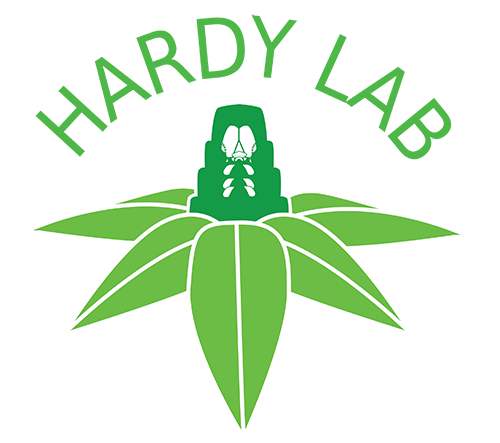Valid Names Results
Platylecanium fusiforme (Green, 1922) (Coccidae: Platylecanium)Nomenclatural History
- Lecanium (Platylecanium) fusiforme Green 1922a: 1020. Type data: SRI LANKA: Ambalangoda, on leaves of undetermined shrub.. Syntypes, female, Type depository: London: The Natural History Museum, England, UK; accepted valid name
- Lecanium fusiforme; Green, 1922; Green 1937: 303. subsequent use
- Platylecanium fusiforme (Green, 1922); Takahashi 1942: 24. change of combination
- Coccus fusiforme (Green, 1922); Ali 1971: 24. change of combination
- Platylecanium fusiforme (Green, 1922); Tang 1991: 136. revived combination (previously published)
Common Names
Ecological Associates
Geographic Distribution
Countries: 1
- Sri Lanka | Ali1971 Green1922a Green1937
Keys
- JoshiFi2019: pp.7 ( Adult (F) ) [Species of Platylecanium]
- Tang1991: pp.133 ( Adult (F) ) [Asia]
Remarks
- Systematics: Lectotype and paralectotypes (NMHL) designated in Hodgson, 2025a from Green's type material. P. fusiforme resembles P. coelogyne, but differs in having: (i) a body with pointed anterior and posterior ends; (ii) much longer anal plates, and (iii) long thin stigmatic spines. (Hodgson, 2025)
- Structure: Slide-mounted adult female body basically lemon-shaped, rather pointed at both ends, length 2.4‒4.4 mm, width 1.25‒2.9 mm; anal cleft about 1/6th of body length. Platylecanium fusiforme can be diagnosed by the following combination of character-states: (i) body lemon shaped, mature adults distinctly pointed at each end; (ii) anal plates clearly longer than their combined width; (iii) each anal plate without a cleft on underside of inner margin; (iv) margin not crenulated; (v) marginal and dorsal setae similar in size; (vi) preopercular pores similar in width to width of a setal socket; (vii) preopercular pores associated with all four clear areas; (viii) each stigmatic cleft with 3 stigmatic spines, subequal in length; (ix) multilocular disc-pores restricted to abdominal segments VII and VI; (x) legs very reduced, mainly to a claw, without digitules, and (xi) antennae moderately developed, showing 4 or 5 obscure segments. The dorsum of mature P. fusiforme becomes sclerotised along the reticulation lines, somewhat similar to mature P. nepalense, but the latter has (i) many more stigmatic spines in each cleft; (ii) shorter antennae, and (iii) the body is much less pointed at each end. (Hodgson, 2025a)
- General Remarks: Good description and illustration of adult female by Tang (1991). The key in the paper, Joshi, S., & Firake, D.M. 2019 First record of Platylecanium nepalense Takagi (Hemiptera: Coccomorpha: Coccidae) from India, with redescription and a key to the species of Platylecanium Cockerell & Robinson, is for species of Platylecanium in the world, but by mistake Joshi wrote it's heading as key to the species known from India. (Joshi, pers. comment)
Illustrations
Citations
- Ali1971: distribution, host, 24
- BenDov1993: catalog, 238
- Green1922a: description, distribution, host, illustration, taxonomy, 1020-1021
- Green1937: catalog, distribution, host, 303
- Hodgso2025a: description, diagnosis, distribution, host, illustration, 174-176
- JoshiFi2019: key, 7
- Takaha1942b: taxonomy, 24
- Tang1991: description, distribution, host, illustration, taxonomy, 136-137
- Willia2017a: catalog, list of species, 210
- WilliaBe2009: catalog, taxonomy, 23


